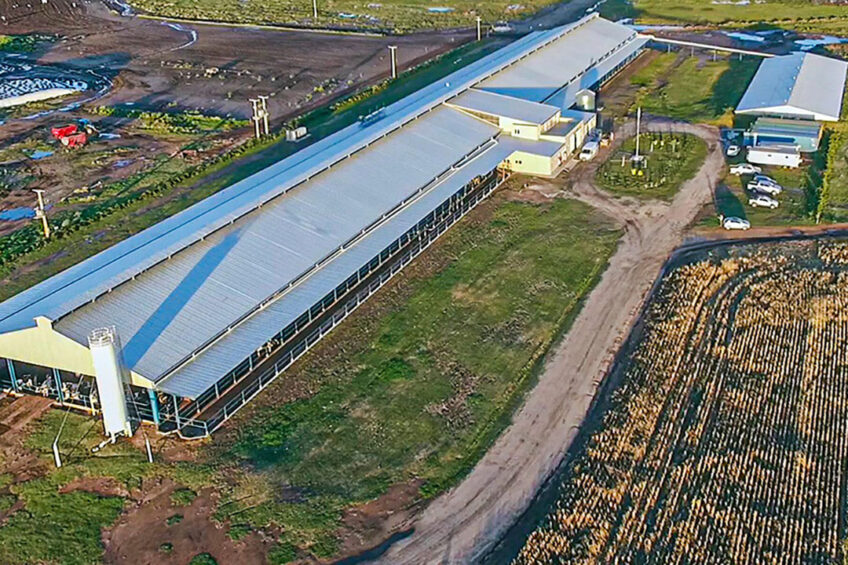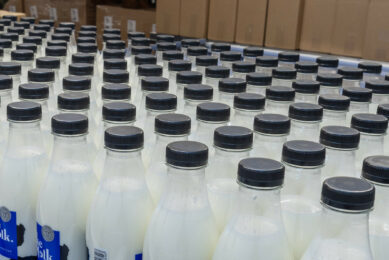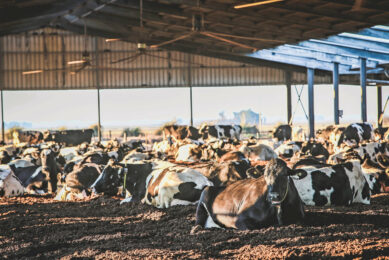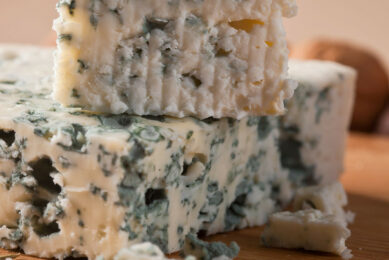Success stories: Innovative farming in South America

The demand for dairy products is growing in South America. At the same time, consumers are becoming more demanding when it comes to food safety, traceability, animal welfare and environmental concerns. Innovation is a way to strengthen the competitiveness of companies.
Innovation is also a tool that can be used to meet societal challenges. To inform the sector about possible solutions, a virtual edition of the International Congress of Dairy Innovation was held recently in Argentina. The event was organised by Rosario Stock Exchange, food and renewable energy producer Adecoagro, the Rosario Food Bank (BAR) and Dairy Farm Grupo Chiavassa. The main aim was to give examples of developments in dairy farming with presentations of 3 success stories (Nuestro Agro).

IMBO Agropecuaria, Agrindus and Agrícola Ancali
The story of IMBO Agropecuaria comes from Argentina. This company produces milk, meat, feed and grains using modern technology. It has a dairy farm where milking is done with milking robots and where manure is processed into compost.
Agrindus’ story comes from Brazil. This company is one of the three largest milk producers in the country. It uses innovative technologies to improve the genetics of the animals, and it produces a remarkable type of milk under its own brand.
The Chilean company Agrícola Ancali is one of the largest milk producers in South America. It is known for using advanced production technologies, genetics, management and robotics to achieve the highest possible quality of milk. These companies share a common vision with well-defined objectives. They see their companies as more than just a raw material producers. Their objective is to make food that meets the demands of conscious consumers.

Argentina: IMBO Agropecuaria
An example of innovation in Argentina is the company IMBO Agropecuaria, near Córdoba. IMBO is a family business that has expanded through innovations into a dairy farm with 660 dairy cows. One of the most important innovations was the renewal of the management system. “We have outlined a vision for 2025, with a strategy that will help us achieve our goals,” said María Pía Bonamico, one of the directors of IMBO.
Half of the work is done by 6 DeLaval VMS milking robots in a fully automated system. The barn is free range and modularly designed, which allows for different treatment of cows and heifers. The company hopes to increase the current daily average of 34 litres per cow to 40 litres when the second automated free-range barn is ready.
Manure is removed using a flushing system and a manure separation system that separates the solid fraction from the liquid fraction. The liquid fraction is reused for rinsing after several sedimentation basins. Rainwater from the barn is collected in a reservoir with a storage capacity of 2 million litres, and this water is used to clean the milking parlour. The water is heated with solar panels, and the plan is to use solar panels to provide the energy for the 72 fans in the barn.
The manure is used to fertilise the farm. There, the necessary roughage in the form of soybeans, maize, winter wheat and oats is grown on 1,800 ha. The dairy branch of the company tells the agricultural branch what the demand is for feed, and that determines in which batch this is made. “This allows both production units to be analysed separately, so we can constantly compare and evaluate ourselves,” said Bonamico. The development of a system based on blockchain technology for traceability of milk is a challenge. This is done in collaboration with the University of Rio Cuarto. “The product that reaches the consumer contributes to sustainability and well-being: well-being in the sense of well-being for animals, the soil, the people who work in the company and for society as a whole,” Bonamico summarises.

Brazil: Agrindus
Agrindus S.A. is 1 of the 3 largest milk producers in Brazil. It is located in the state of São Paulo. Director Roberto Jank is also vice president of the Brazilian Association of Dairy Farmers (Leite Brasil). Its management is in the hands of the third and fourth generations of the family and focuses on sustainable production. Jank started by stating that the greatest achievement is biotechnological innovation: “We are doing this with the same biological assets, cows and soil, but with a more efficient way of working.”
Genomics is a great concept for Agrindus, which has been working for years with sexed semen, in vitro fertilisation and a constant production of cows with high-quality genetics for its own company, but it also sells animals to third parties. “Our goal is to earn about 3–4 cents extra per litre of milk per year with control over genetics,” said Jank. Milking takes place 24 hours a day with a production of approximately 23 million litres per year. “Animal welfare is essential for the 1,800 cows we keep in a tropical climate. That is why we put them all in the cubicle with a wind tunnel that ensures an optimal climate. The cows can also walk freely, but they eat and rest on sand beds. We communicate this to our customers because we think it is important to translate what animal welfare is for consumers, who often do not understand what a happy cow is,” explains Jank.
Efficient use of water and soil
Sustainability is achieved, among other things, by the efficient use of water and soil. The water is reused for rinsing the barns and the manure is used in arable farming. “This allows us to produce good quality feed in sufficient quantity. In winter, we grow fodder crops such as oats, ryegrass and rye, producing 45–50 tonnes of dry matter per hectare. Traceability of all raw materials we use is necessary, because this gives us control over the entire production process. That is very important,” added Jank. “We produce milk without A1 beta-casein, but with A2 beta-casein, using cows with a specific genetic selection. This is done with the management programme ‘Milk Manager (Gestor Leite)’ of CRV Lagoa. This has made it possible to select animals that give milk with a lot of A2 beta-casein. This milk is sold under the brand ‘Letti A2’. The lactose intolerance that many people think they suffer from is actually the inability to digest A1 beta casein. The symptoms are very similar.” Thanks to this innovation, Agrindus is the first company in Brazil to have an A2 milk certification.

Chile: Agricola Ancali
One of the largest dairy farms in South America is Agricola Ancali Ltd in the Los Ángeles region of Chile. The company has 5,800 dairy cows, of which about 5,100 are milked on average. In addition, the company has 8,700 ha of maize, 650 ha of alfalfa and 2,800 ha of grassland. Milking is done with 72 DeLaval VMS robots. The total milk production is 200,000 litres per day, and the milk is of high quality. The somatic cell count averages 160,000/ml, the bacterial count is 10,000 and the milk has 3.4% protein and 3.9% fat.
The process of innovation and improvement of milk quality started in 1987 with a small herd and only in 2002 a farm with 300 dairy cows was acquired. In 2003, it installed its first 40-stand milking carousel. “In 2007, convinced that volume was a good way to work more efficiently, we installed two new milking carousels, increasing production from 1,500 to 4,500 cows. In 2010, the fourth milking carousel was installed, so 6,000 cows were milked,” said the manager, Miguel Aparicio.
Milking robots
As a replacement for the milk carousels, which suffered a lot of wear and tear, it was decided in 2014 to start using milking robots. They started with a first module of eight robots and 500 cows, and the results were very encouraging. “In 2016 there were four milking carousels and 16 robots with which we could milk 7,000 cows. In 2017, we decided to switch to a free-range barn and to automate milking with 64 DeLaval VMS milking robots.” A milking carousel is still in use for those cows that need special treatment.

Annual productivity increase
The results came quickly, with an annual productivity increase of 10% and an improvement in work efficiency of about 60%. There are 40 employees per shift who perform all tasks except milking, eight hours a day, and a specialised team of three people that deals with specific activities of the robot, such as the immediate care of cows with incomplete milking, the management of the milk queue, sampling by mastitis detection index, and insemination. This improved not only milk production but also the average lifespan of the cows.
“Where are we going?” It is a rhetorical question that Aparicio asks. “We are convinced that robotics has given us the opportunity to enable a large business and to return to our original dream of the genetic improvement of livestock. That is why we have entered a strategic alliance with a well-known American genetics brand in 2019, to create the genome of the entire herd and to develop an exclusive Ancali robotic index that will allow us to substantially improve the cow,” concludes Aparicio.
South America overview
There are no exact figures available on the number of dairy farms in South America. In Brazil alone, in 2017, according to estimates by the Brazilian Institute of Statistics (IBGE), there were 1.2 million dairy farmers. Together, they had about 16 million head of dairy cattle. Within the group of small dairy farms, often with only a few cows, a lot of “informal milk” is produced that is sold at home or is processed into cheese. According to the IBGE, the average production is 5 litres of milk per cow per day, but there are professional farms that produce 30 litres or more per cow per day, which is about the average in the Netherlands.
Join 13,000+ subscribers
Subscribe to our newsletter to stay updated about all the need-to-know content in the dairy sector, two times a week.










